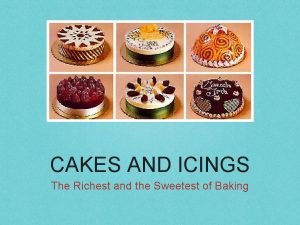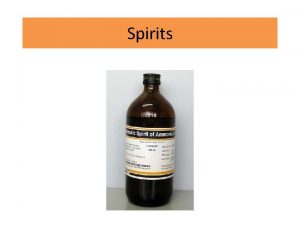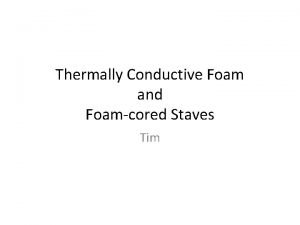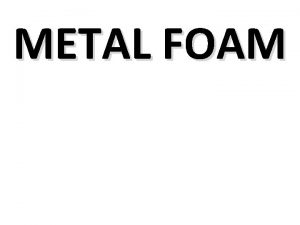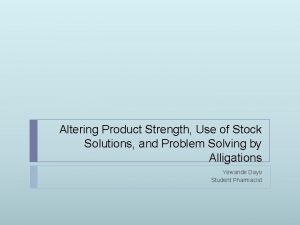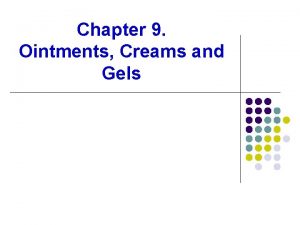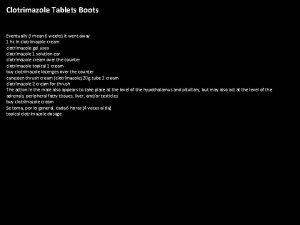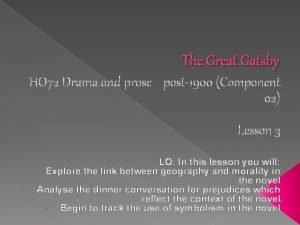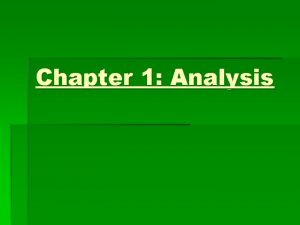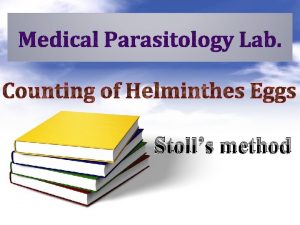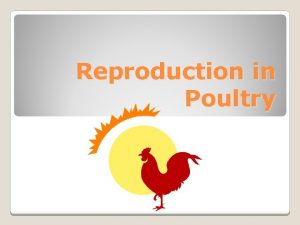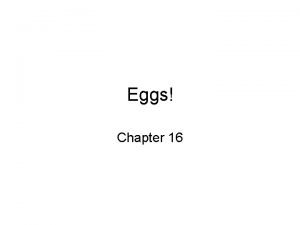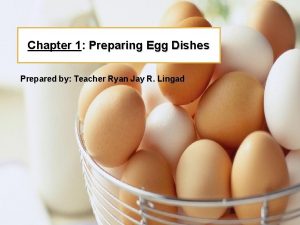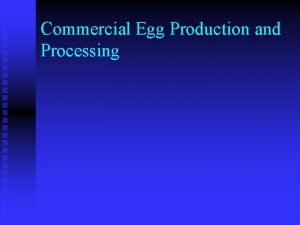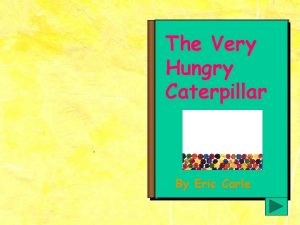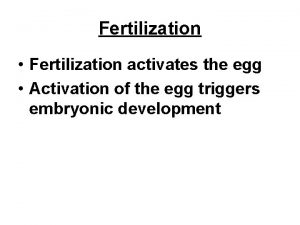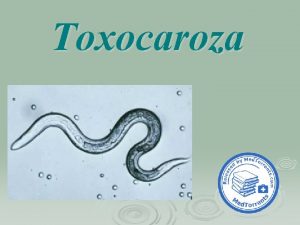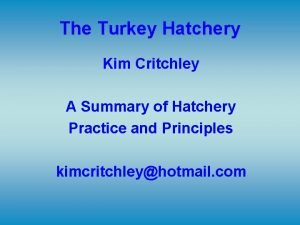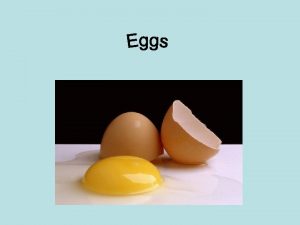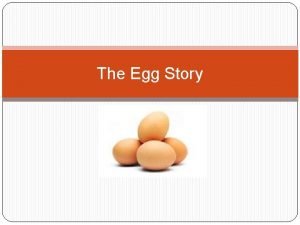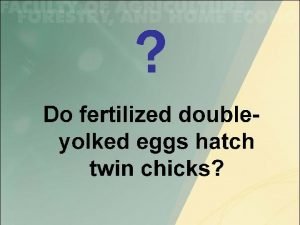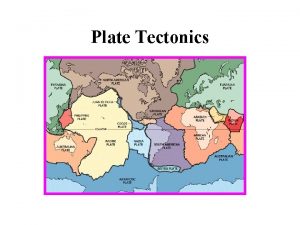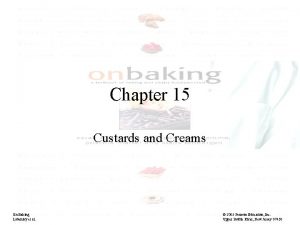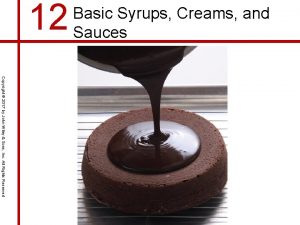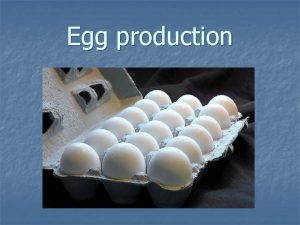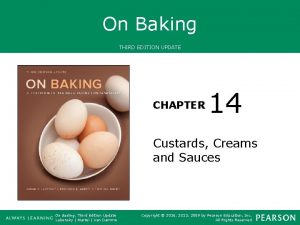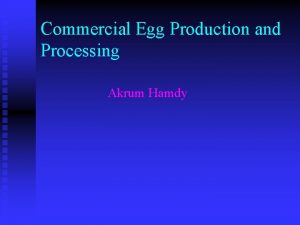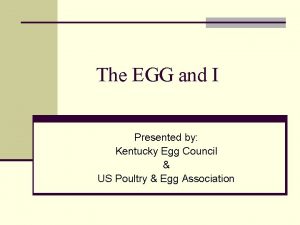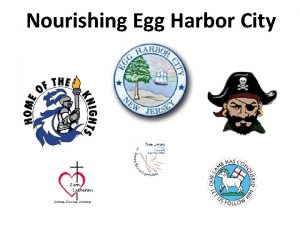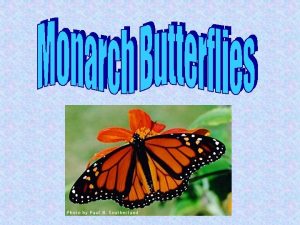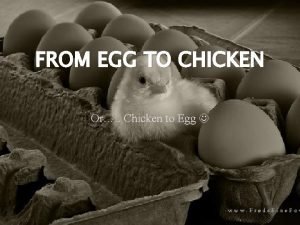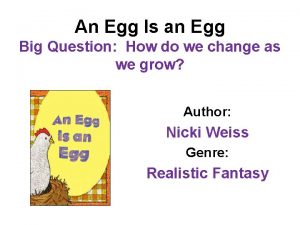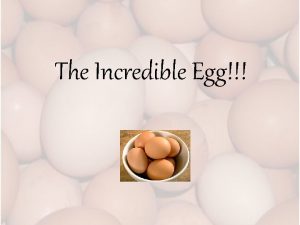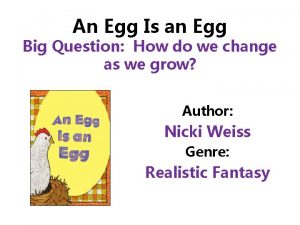Chapter 15 Syrups Creams Custards Egg Foams and










































- Slides: 42

Chapter 15 Syrups, Creams, Custards, Egg Foams and Icings

Sugar Solutions CHAPTER • Sugar Solutions – A combination of sugar and water that is brought to a boil and cooked to a certain temperature – Baumé – Simple Syrup – 30 Baumé Syrup – Cake Syrup 15

Sugar Solutions • Sugar Solutions – Ingredients and Process for Sugar Solution • Cane sugar / Beet sugar • Crystallization of sugar • No impurity in sugar or water • No agitation during cooking – Cooking Sugar • Heated above the boiling point CHAPTER 15

Creams • Basic Creams and Custards – Whipped cream – Crème Chantilly – Cooked Stirred Custards • Crème Anglaise • Pastry Cream – Baked Custards • Crème Brûlée • Pot de Crème – Almond Cream CHAPTER 15

Creams • Basic Creams and Custards CHAPTER 15 – Whipped Cream • Heavy cream that has been whipped to increase its volume and lighten the texture • 35 -40% butter fat is desired • Use cool cream and equipments depending on the room temperature • Whip on medium speed – Crème Chantilly • Vanilla-flavored whipped cream • 15% of sugar based on the weight of the cream

Creams • Basic Creams and Custards – Almond Cream • Used as a filling for a variety of baked goods • Butter, sugar, eggs and nut meal • Almond paste can be substituted with almond meal – Frangipane • Lighter taste and texture than almond cream • Two parts of almond cream to one part of pastry cream CHAPTER 15

Creams • Basic Creams and Custards – Crème Anglaise • Cooked Stirred Custard • Used as a base for dessert sauces, bases for ice cream, butter cream and mousse • Never cooked above 180°F • Crème Anglaise Ingredients and Variations CHAPTER 15

Creams • Basic Creams and Custards – Crème Anglaise Ingredients and Variations • Milk and Cream • Sugar • Egg yolks • Flavorings: vanilla, herbs, alcohols, nut pastes, chocolate • Hot or Cold Infusion CHAPTER 15

Creams • Basic Creams and Custards CHAPTER 15 – Preparing Crème Anglaise • Bring liquid ingredients to a boil with half of the sugar • Mix another half of the sugar with egg yolks, stir to combine • Temper the hot milk and the yolk mixture together • Cook the mixture to 180°F – Overcooking the mixture – Sanitations

Creams • Basic Creams and Custards CHAPTER 15 – Pastry Cream • Cooked, stirred custard • Used fresh or baked • Very versatile – Ingredients and composition • Milk, sugar, eggs or yolks, cornstarch, butter • Cornstarch thickens the cream and protects the egg protein from curdling • Butter softens the texture

Creams CHAPTER • Basic Creams and Custards – Preparing Pastry Cream • Same as Crème Anglaise, but pastry cream has to be brought to a boil • Fully swell the starch and cook off starchiness • Deposit into a shallow container to cool down quickly, and cover with plastic on contact – Pastry Cream Considerations • Always cook in stainless steel pot • Boil for 2 minutes • Cool down quickly • Syneresis 15

Custards • Baked Custards – Custard Base – contain whole eggs – Liquid – milk and/or cream – Sugar – Flavorings CHAPTER 15

Custards CHAPTER • Baked Custards 15 – Crème Brûlée • Rich custard with a thin layer of caramelized sugar • Baked in a low, wide ramekin, then chilled to set after baking • Before serving the custard is sprinkled with sugar and torched to burn the sugar – Crème Caramel • Slightly firmer than crème brûlée • Turned out of a mold before serving • Caramelized sugar is poured into molds, then custard is poured in and baked

Custards • Baked Custard – Pot de Crème • Chocolate is the most common flavor • Cooked at a low temperature in water bath • Served in the dish in which it was baked – Cheesecake • Cream cheese, sour cream, butter, sugar, eggs and flavorings • Set by coagulation of eggs • Close attention is required to obtain a smooth batter • Cooked at low temperature in water bath CHAPTER 15

Advanced Creams • Advanced Creams – Combinations of basic creams – Additional components: gelatin, egg foams, nut pastes and chocolate CHAPTER 15

Advanced Creams • Advanced Creams – Crème St. Honoré • Also know as Crème Chiboust • Pastry cream and French or Italian Meringue (4: 1) • Addition of gelatin for a stability – Process • Melt bloomed gelatin in warm pastry cream • Make French or Italian meringue • Fold in the meringue into pastry cream • Use immediately CHAPTER 15

Advanced Creams • Advanced Creams – Crème Paris-Brest • 100% pastry cream, 50% butter and 25% praline paste • Butter stabilizes the cream – Process • Smooth the pastry cream and the butter separately • Add the praline paste to the butter and mix • Add the pastry cream and mix • Pipe immediately CHAPTER 15

Advanced Creams • Advanced Creams – Diplomat Cream • Pastry cream lighten with whipped cream and stabilized with gelatin • Crème Legere – Process • Whip the cream to a soft peak • Whip the pastry cream until smooth • Bloom the gelatin, melt and temper into the pastry cream • Fold in the whipped cream just to incorporate • Use immediately CHAPTER 15

Advanced Creams • Advanced Cream – Mousseline Cream • Cross between pastry cream and butter cream • Combine pastry cream and soft butter until light and fluffy – Process • Make pastry cream base with half of the butter • Once the cream is cooled, whip it until smooth • Add room temperature butter and whip until full volume CHAPTER 15

Advanced Creams • Advanced Cream CHAPTER 15 – Crémeux • Crème Anglaise style custard thickened with butter and sometimes gelatin • Variety of flavoring options – Process • Add bloomed gelatin into crème Anglaise base to melt. Add desired flavoring. • Once the cream is 86 -95°F, add softened butter • Use an immersion blender to emulsify the cream

Egg Foams CHAPTER • Egg Foams – Whipped whole eggs, egg yolks, or egg whites with sugar – Bases of many pastry items – Albumen – Cooked Egg Foam – Uncooked Egg Foam 15

Egg Foams • Egg Foams CHAPTER 15 – Meringue • Beaten egg whites stabilized with sugar • Must be processed in fat-free environment • Denatured protein forms new bonds and trap air and water in a delicate matrix • Ratio of sugar to egg whites • Additional Ingredients for Meringue – Cream of tartar – A mild acidic state strengthen the foam

Egg Foams • Egg Foams – Meringue • Precautions for Meringue – Work with clean utensils – Egg whites temperature 59 -68°F • Categories of Meringue Development – Soft, Medium and Stiff Peaks CHAPTER 15

Egg Foams • Egg Foams – French Meringue • Minimum of 1: 1 egg whites to sugar • Up to 1: 2 egg whites to sugar – Process (1: 1 egg whites to sugar) • Whip the egg whites on medium speed with 1/3 of sugar until uniform small foams are formed • Increase the speed and mix to stiff peaks • Add the remaining sugar and mix until incorporated CHAPTER 15

Egg Foams • Egg Foams – Swiss Meringue • More stable than French meringue • Heat the egg whites and sugar before whipping – Process • Combine the egg whites and sugar in a mixing bowl, heat over bain-marie as whisking. • Once the temperature reached to the desired point (between 120 -160°F), whip on medium high speed until stiff peaks form. CHAPTER 15

Egg Foams • Egg Foams CHAPTER 15 – Italian Meringue • Cooked meringue • Commonly used in mousse, icing, topping etc • Cooked sugar is poured over whipping whites – Process • Cook the sugar to the firm ball stage. • Once the sugar reaches to 240°F, start whipping the egg whites • Slowly add sugar syrup once it reaches 246 -250°F • Whip at medium-high speed for several minutes then mix on a low speed until slightly cooled

Egg Foams • Egg Foams – Pâte à Bombe • Cooked egg foam with egg yolk and cooked sugar • Provides rich flavor and color – Process • Cook the sugar to a firm ball stage • Whip the egg yolk to a ribbon stage • Process as in Italian meringue process CHAPTER 15

Icing • Used to fill, cover and decorate cakes, pastries and cookies • Butter cream, glaze, fondant, ganache, flat icing, royal icing • Protect the cake from drying out CHAPTER 15

Icing • Buttercream – Basically, whipped butter sweetened with sugar, with sometimes additional egg foams – The fat determines the quality • Butter • Hydrogenated fat CHAPTER 15

Icing • Buttercream CHAPTER 15 – Basic Buttercream • Powdered sugar, butter and/or icing shortening • Pasteurized egg whites, water or milk can be whipped in to provide moisture – Process • Sift powdered sugar and add to a mixing bowl. • Add the fat and mix to combine. • Whip at a medium-high speed and add pasteurized egg whites or other liquid if using.

Icing • Buttercream – Swiss Buttercream • Swiss meringue with softened butter – Process • Prepare Swiss meringue • Once it is at full volume and cool, slowly add the softened butter • Whip until fully incorporated and light and fluffy. CHAPTER 15

Icing • Buttercream CHAPTER 15 – Italian Buttercream • Italian meringue with softened butter • If butter was added while the meringue was still too hot, whip on high speed to emulsify – Process • Make Italian meringue. • Once cooled to room temperature, add the softened butter. • Whip until light and fluffy and reserve.

Icing • Buttercream – French Buttercream • Pâte à bombe and softened buttercream • Richest of all egg foam based buttercreams • Reduced shelf life – Process • Make pâte à bombe • Add the softened butter to the pâte à bombe once it has cooled. • Whip until light and fluffy and store in the refrigerator until needed. CHAPTER 15

Icing • Buttercream – Crème Anglaise Buttercream • Also known as English buttercream • The most flavorful, but the most prone to spoilage • Crème Anglaise, softened butter and Italian meringue – Process • Make crème Anglaise, strain and whip in a mixer. • Make Italian meringue and whip until cool down to room temperature. • Add the butter to the whipping crème Anglaise. • Add the Italian meringue and fold to combine. CHAPTER 15

Icing • Buttercream – Working with Buttercream • High temperature melts the fat • Butter the most difficult work with, because of the low melting point • Cold temperature hardens the buttercream • Prepare the buttercream at the proper temperature • Smooth and free of air pockets • Flavor possibilities • Incorporation of chocolate • Keep the waste minimal CHAPTER 15

Icing • Fondant – Sugar syrup that has been cooled and agitated – Smooth, white, creamy appearance – Turn into liquid when heated – Overheated fondant will have a dull appearance – Working with Fondant • Stir and heat up without incorporating any air • Warm up to 100 -120°F depends on type of fondant • Colorant and/or flavorings can be added CHAPTER 15

Icing • Chocolate Glaze – Essentially, thinned ganache – Chocolate, gelatin, cocoa powder, sugar syrup, cream, etc – Versatile, can be applied to many products – Working with Chocolate Glaze • Prepare the glaze at proper temperature • Prepare the items to be glazed cold or frozen • Place the item on a pouring screen or sheet pan • Minimize waste CHAPTER 15

Icing • Chocolate Ganache for Glazing CHAPTER 15 – Ganache: creamy chocolate mixture made with liquid, usually cream. – Proper emulsion sets the glaze properly and provide a shine – Working with Chocolate Ganache • Gently heat the ganache before using to obtain a desired consistency • It sets up faster than chocolate glaze, due to the high fat content – work quickly

Icing • Fruit Glazes CHAPTER 15 – Easy to prepare, vibrant in color – Fruit puree, glucose, water and gelatin, may contain cold process clear glaze – Working with Fruit Glazes • Avoid incorporation of air • Prepare at proper temperature and proper consistency.

Icing CHAPTER • Royal Icing – Powdered sugar, water and egg whites – Piped to create decorative borders and ornaments – Sets up firmly after dried – Can be colored as desired • Flat Icing – Powdered sugar and liquid such as water, milk and lemon juice – Can be flavored 15

Icing • Other Icings – Whipped Topping • Non-dairy whipped cream replacement – Crème Chantilly – Italian Meringue • Can be browned with torch for a visual effect • Apply to pastries before the meringue sets up CHAPTER 15

Conclusion CHAPTER • Basic syrups, egg foams, creams and icings are required to produce more advanced pastry items • Practice of proper sanitation, personal hygiene and storage procedure 15
 This baked product is the richest and sweetest of all.
This baked product is the richest and sweetest of all. Hydroalcholic solution are
Hydroalcholic solution are Pocofoam
Pocofoam Disadvantages of metal foams
Disadvantages of metal foams Alligation calculator creams and ointments
Alligation calculator creams and ointments Differences between ointment and cream
Differences between ointment and cream Alligation medial and alligation alternate
Alligation medial and alligation alternate Alligation method
Alligation method Clotrimazole boots
Clotrimazole boots East egg and west egg
East egg and west egg West egg and east egg
West egg and east egg Map of the great gatsby setting
Map of the great gatsby setting West egg and east egg
West egg and east egg West egg and east egg
West egg and east egg Map of west and east egg
Map of west and east egg Why is nick carraway made the narrator?
Why is nick carraway made the narrator? What is the joining of egg and sperm called
What is the joining of egg and sperm called Stoll's dilution technique
Stoll's dilution technique Chicken uterus
Chicken uterus Label and components of egg
Label and components of egg Egg drop project with straws and rubber bands
Egg drop project with straws and rubber bands Goals and objectives of egg production
Goals and objectives of egg production Tools utensils and equipment needed in egg preparation
Tools utensils and equipment needed in egg preparation In-line production process eggs
In-line production process eggs Very hungry caterpillar saturday he ate through
Very hungry caterpillar saturday he ate through Periblastula
Periblastula What came first the chicken or the egg
What came first the chicken or the egg Egg donation nashville
Egg donation nashville Advantages of egg shaped sewer
Advantages of egg shaped sewer Breakdown poem
Breakdown poem Toxocara
Toxocara Turkey egg development chart
Turkey egg development chart Elicited response example
Elicited response example The layers of an egg
The layers of an egg Egg grades
Egg grades The great gatsby historical background
The great gatsby historical background Chicken egg tooth
Chicken egg tooth Chelazia
Chelazia Atkisson pyramid model example
Atkisson pyramid model example Rock, paper, scissors with a twist
Rock, paper, scissors with a twist What happens when a double yolk egg hatches
What happens when a double yolk egg hatches Egg tectonic plates
Egg tectonic plates Phylum cnidaria hydra
Phylum cnidaria hydra
